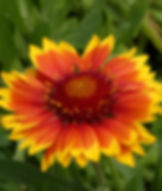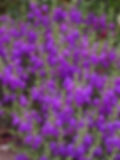Top Ten Natural Nectar Plants
- Waterwise Gardening | David Salman
- Jul 19, 2020
- 5 min read
All the plants included in our 2020 Pollinator Plants Days are favorites, but here are 10 plants David Salman decided to highlight for their beauty, value to pollinators as sources of "natural nectar" and resilient performers in our high desert gardens of northern New Mexico.
Pollinator friendly plants are why late summer and fall gardens can be as colorful as spring time with a stunning display of flowers and seed heads. Agastache (hummingbird mint), Salvia (Sage), Zauschneria (Hummingbird Trumpet or Fire Chalice) as well as gorgeous ornamental grasses, described below, like Muhlenbergia reverchonii and Sporabalis wrightii 'Windbreaker' are all wonderful additions to the waterwise landscape as a source of natural nectar for pollinators and stunning colors to please gardeners.
Agastache ‘Ava‘ is a hybrid of A. cana x A. barberi both native to the southwestern U.S and Mexico, ‘Ava’ was cutting propagated from a single seedling that appeared in one of my xeriscapes.. A tall, robust plant, ‘Ava’ inherited her height from A. barbari, a very tall species from northern Mexico. Flowers appear over a long June to September (sometimes to first hard frost) bloom period and are highly attractive to bees, hummingbirds and butterflies. Leaves have a mint scent, and may be used fresh or dry to flavor teas.48-60" tall x 24" wide and cold hardy to zone 5. Find 8 varieties of Agastache offered this season.
’Red Velvet’ is one of the very best Yarrows with fade-resistant fragrant flower heads. A tough easy-to-grow long blooming plant for xeric gardens. Thrives with heat, sun and most soils including clay. Rabbit and deer resistant and is a butterfly magnet. 24-36 in. tall x 24-36 in. wide and cold hardy to zone 4.
This beautiful aster is an outstanding native plant selection that has a dense lower grower with a profusion of white flowers in fall. The fall blooming flowers are an important nectar source for bees and butterflies. Bees need nectar in the fall to survive winter. It is very easy to grow and thrives in a wide range of soils. Full or part sun. 24-24" tall x 24-36" wide and cold hardy to zone 4.
A very long blooming native plant for hot, dry, poor soil conditions. this easy-to-grow perennial has large re-orange flowers edged with yellow. An exleent plant for attracting bees and butterflies. Thrives in xeric-average water and well-drained sandy or average soil. Full Sun. Grows 12-16" tall x 10-12" wide and is cold hardy to zones 3.
Helianthus maximiliana 'Santa Fe' is a select form of this stunning fall blooming native wildflower. This plant is widely grown around the older parts of Albuquerque, Santa Fe (and elsewhere in NM) where it has been a "pass around" plant between neighbors for generations. About 16 years ago, David spotted an outstanding specimen in a neighborhood that he drives through to work. The plant was notable for its strong, upright, non-floppy growth habit and spectacular display of large golden yellow daisy-like flowers that were stacked tightly on the bloom spikes. He got permission to take some cuttings and the cultivar 'Santa Fe' was introduced the next year to the gardening public. Many growers start this perennial from seed, but the plants can be highly variable in both habit and the density and arrangement of the flowers. Generally, it's not a very tidy grower or a profuse bloomer. But 'Santa Fe' is a star and will light up your fall garden and bring the seed-eating songbirds to its seed heads later in the fall. 6-8' tall x 4' wide and cold hardy to zone 4.
A blooming machine! This native western wildflower has tight buds that unfurl to fragrant, lemon-yellow blossoms held on bright red stems. Grows almost like a vine so it's best to place it in the front border or rock garden.
Very heat tolerant. Thrives with xeric water and most soils including clay. Grow 6-+12 tall by 12-24' wide and cold hardy to zone 5.
Penstemon pinifolius 'Compactum' forms a low, bushy mound with green leaves that resemble pine needles. Tubular flame-orange flowers appear in early to midsummer, and are a magnet for hummingbirds. Because this plant is woody at the base, prune no lower than 4 inches in spring. Gorgeous in a rock garden or dry border, and looks particularly good with a mulch of gravel beneath. Evergreen in mild winter regions. Very drought tolerant once established. 10-12" tall x 12-18" wide and cold hardy to zone 4.
A select form of the common mealy cup sage that is considerably more cold hardy and has unusual silver calyxes. Everblooming, Texas Violet™ has deep blue flowers that poke out of silver calyxes, making a eye-catching combination. A favorite plant for bumblebees and other native pollinators as well as hummingbirds. In the right growing conditions and surrounded by gravel mulch, the plant will often re-seed it self. Cold hardy and perennial.
18-24" tall x 15-18" wide and cold hardy to zone 6.
This long-blooming native hybrid skullcap covers itself with a profusion of dark violet flowers held on short compact flower spikes. Scutellaria ‘Dark Violet’ blooms most of the summer and its neat, mounding habit enables ‘Dark Violet’ to be planted along the edges of hot, sunny paths. The hotter and harsher the growing conditions, the better it performs. This plant will stay compact. 6" tall x 10-15" wide and it is cold hardy to Zones 5. Introduced by David Salman in 2013.
This superb Hummingbird Trumpet spreads like a groundcover and is perfect for slopes and cascading over the edges of raised beds. It blooms in mid-to-late summer it lights up the garden with a profusion of bright-orange flowers that hummingbirds adore. Introduced by David Salman in 2000, Orange Carpet originates from arid, mountains of southern Idaho and thrives in northern New Mexico gardens. Wait until spring to cut it back just above ground level so not to cause during dry winters. 4-6" tall x 15-18" wide and cold hardy to zone 5.
______________________________________________
Two of our Favorite Fall Blooming Ornamental Grasses
Here are two of our favorite ornamental grasses. Muhlenbergia reverchonii (Undaunted Ruby Muhly) and Sporobolus wrightii 'Windbreaker'. Both are exceptional companions for late summer/fall blooming perennials and feed feed songbirds and other seed-eating animals later into the winter months.
Muhlenbergia reverchonii (Undaunted® Ruby Muhly Grass) A glorious late summer blooming native grass enjoyed for its showy cloud of pink flowers. Native to a limited area of Texas and Oklahoma, it is exceptionally cold hardy and easy-to-grow ornamental grass. It makes an excellent companion plant for numerous summer and fall blooming perennials like Erynigium yuccafolium, fall blooming asters, tall growing Agastaches like 'Ava' and Agastache rupestris. Blonde Ambition blue grama and Panicum virgatum 'Shenandoah' are well matched companions as well. 24-36" tall x 18-24" wide and cold hardy to zone 5.
Sporabalis wrightii 'Windbreaker' has been bred to grow to huge proportions and is one of our showiest and largest growing native ornamental grasses. Blooming in mid-summer, the 8 ft. tall flower spikes range from blonde to burgundy and turn to tan as the seeds ripen. Plant it where it's large size is useful for screening unsightly views and for providing windbreaks on the plains of El Dorado and Rancho Viejo.winner. 7-9' tall x 4-5' wide and cold hardy to zone 5.
© All articles, videos and images are copyrighted by WATERWISE Gardening, LLC.
Republishing an entire WATERWISE Gardening blog post or article is prohibited without written permission. Please feel free to share a short excerpt with a link back to the article on social media websites, such as Facebook.




































